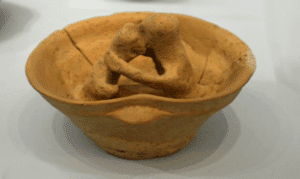The use of water for labour and birth during COVID 19 virus
Dianne Garland
Freelance Midwife FRCM SRN RM ADM PGCEA MSc
Summary
I was asked to write about the use of water during the COVID 19 pandemic, to reassure parents about using water. This is based on the best evidence that we currently have about the actual virus, how it spreads and how we can contain the virus during labour/birth. It should be appreciated that our knowledge of COVID 19 is changing on a daily basis so the advice I have shared is where we are at this date and time.1
On a positive note, and during these difficult times it is important to remember midwives will be there to support and provide safe care for you, your baby, birth companion and themselves. Working together, midwives will provide choice, respect and humanisation of one of the most beautiful and important parts of our lives. Be positive and prepared about labour and birth. Where classes have been cancelled review web sites who can assist and of course it’s recommended to write a birth preference plan which midwives will follow as far as is safely possible.
Some maternity units have postponed water labour/births and you should discuss this with your midwife to find out whether your unit has been affected. 2 It is not possible to cover all aspects of care regarding the use of water so please consult your local unit or midwife.
History and background
Water has been used as a mainstream form of pain relief for many years within the NHS. Water labour/birth has been used at home, birth centres and labour wards since early in 1980’s. The Care Quality Commission 2018 (hospital inspectors) state that 20% women use water for labour and half that number – 10% stay in the pool and birth.3

Waterbirth cited as found in Crete from 2700-2900 years ago
There has been much written about the use of water for labour and birth from the UK, but also other countries have been publishing robust up to date results from their own countries. Leaders in the worldwide studies are Australia and USA with India, China and New Zealand also publishing. In discussion with waterbirth international based in USA, we now believe over 100 countries offer water labour/birth.4
Whether waterbirth has a long historical background is not possible to prove but the stories of water being used in ancient cultures but maybe of interest to some parents.5
Use of water at home for pain relief
Using a shower or bath at home is a valuable option during the COVID 19 virus. It offers you the benefits of a cheap, home based pain relief which requires no extra equipment or health care worker. I do have a few suggestions if using a shower or bath at home which should make the best use of this option.
- Water should be at a comfortable temperature which makes you feel relaxed, please do not use very hot water.
- Have a window or door open to for some air into the room, and allow some degree of ventilation and coolness outside of the water.
- Have the door unlocked so your home companion can assist you if needed as you enter or leave the water.
- Have an isotonic (energy) drink with you in the room.
- Play some relaxing music (no electricity near water please)
- Bath water should be as deep as possible, usually suggested between your breasts and bump. This may encourage you to feel buoyant and “floating”.
- In a shower you could angle the shower head at any muscle which is particularly aching (sometimes your back or thighs).
When you are relaxed you can balance the hormones of labour. Water can reduce adrenaline (stress, fear and pain), increase endorphins (natural pain relief) and thus increase the main hormone of labour which causes contractions (oxytocins). Water encourages mobility (depending on size and depth of bath) floating and enjoy the warm water sensation on every muscle and ligament.
What the research says about benefits for you and your baby.6
For mother
- reduced obstetric interventions
- reduce use of epidurals or narcotic pain relief
- increase in physiological (normal) labour/birth
- no increase in tears compared to dry land birth
For baby
- Promotes optimal cord clamping
- Improves skin to skin
- Increases rate of breast feeding
- Does not interfere with microbiome.
Best practice in labour wards and birth centres.2
Mothers need to be symptom free of COVID 19
Hygiene of all pools and equipment remains as per trust/ manufacturer instructions
Personal protect equipment will be used to protect midwife
COVID 19 is thought to be mainly droplet infection, however, all faecel material should be removed promptly from water.
Some units are not suggesting that birth companions enter the pool.
In some units, mothers/ birth companions may be asked to hold the Doppler on her abdomen whilst midwife listens to babies heartbeat.7
Delivering the placenta underwater may require discussion of the positives or not.7
In all circumstances, optimal cord clamping can occur (for minimum 1-5 min or longer at request).
Final thoughts
- Water is a safe, low cost and relaxing form of pain relief.
- PPE will be used to protect you, your baby and midwives / carers.
- Have a back-up plan for preferences during labour and birth.
- Midwives and other health staff are there to provide safe, caring and humanised labour and birth.
Links to resources
 Academic articles
Academic articles
A retrospective comparison of waterbirth outcomes in two United States hospital settings
 Websites
Websites
Evidence Based Birth – Water birth
 Books
Books
Gentle Birth Choices – Barbara Harper
References
- Harper,B 2020 Keeping waterbirth safe during COVID 19 WBI USA
- NHS 2020 Specialty guides for patient management during the coronavirus pandemic. Clinical guide for the temporary reorganisation of intrapartum maternity care during the coronavirus pandemic 9 April Version 1
- CQC. 2019 Survey Of Women’S Experiences Of Maternity Care. London: Care Quality Commission; 2019. https://www.cqc.org.uk/sites/default/files/20200128_mat19_statisticalrelease.pdf. Accessed April 24, 202
- Waterbirth.org. Home. Waterbirth International. https://waterbirth.org. Published 2020. Accessed April 24, 2020
- Garland,D 2017 Revisiting waterbirth an attitude to care. 2nd Macmillan education Palgrave London.
- Harper B. Birth, Bath, and Beyond: The Science and Safety of Water Immersion During Labor and Birth. J Perinat Educ. 2014;23(3):124-134. doi:10.1891/1058-1243.23.3.12
- RCM 2020 Clinical briefing: Waterbirth – COVID 19







